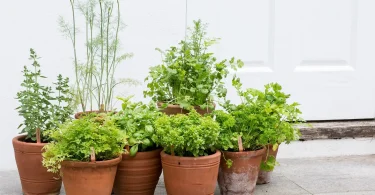Understanding the Importance of Healthy Soil for Crop Growth
Ways to Improve Soil Health: Healthy soil is the cornerstone of successful agriculture. It provides crops with essential nutrients, moisture, and support for root systems. When soil is rich in organic matter, it improves its structure, allowing roots to access nutrients more effectively. A robust microbial ecosystem in soil supports nutrient cycling, helping you grow healthier plants. Well-maintained soil also reduces erosion and enhances water retention, crucial for sustaining crops during dry spells. If soil health is poor, plants may struggle with stunted growth, pests, or disease. By prioritizing soil health, you create a thriving environment where crops can flourish naturally.

The Role of Organic Matter in Boosting Soil Fertility
You can transform your soil’s health by incorporating organic matter, which plays a vital role in fostering fertile and nutrient-rich land. Organic matter, such as compost, manure, leaf litter, and crop residues, enhances soil structure and porosity, allowing for better water retention and aeration. It acts as a slow-release reservoir of essential nutrients like nitrogen, phosphorus, and potassium for your crops.
With organic matter, beneficial microorganisms thrive, breaking down materials into nutrients your plants can absorb while suppressing pathogens. Improved soil structure also reduces erosion and compaction. By continuously adding organic matter, you’ll maintain soil balance, promoting crop growth and long-term productivity naturally.
Composting: A Simple Solution for Rich, Nutrient-Packed Soil
When you compost organic waste, you nurture the soil with a natural, nutrient-rich amendment. To get started, gather kitchen scraps like fruit peels, coffee grounds, and eggshells, along with yard waste such as grass clippings or dry leaves. Layer these materials in a compost bin, maintaining a balance between greens (high in nitrogen) and browns (high in carbon).
Moisture and aeration are key. Turn your compost pile regularly to ensure proper decomposition and add water sparingly to keep it damp, not soggy. Over time, it transforms into fertile humus, enriching soil structure and enhancing water retention for healthier crops.
Mulching Techniques to Preserve Moisture and Prevent Erosion
Using mulch effectively helps regulate soil temperature, retain moisture, and protect against erosion. You should start by selecting organic mulch materials like straw, shredded leaves, grass clippings, or wood chips. Spread a layer of mulch about 2-4 inches thick around your plants, avoiding direct contact with stems to prevent rot. For sloped areas prone to erosion, you can use heavier mulch like bark or stone to hold the soil in place. You may also employ living mulches like clover to enhance soil fertility while covering exposed areas. Regularly replenish mulch to maintain its benefits and ensure your soil remains healthy and resilient.

Utilizing Cover Crops to Enhance Soil Structure and Nutrient Content
By planting cover crops, you can significantly boost the physical and chemical properties of your soil. These crops, such as clover, rye, or vetch, help protect the soil from erosion while breaking up compacted layers with their deep root systems. This improves water infiltration and aeration, creating an environment where beneficial microorganisms can thrive.
Additionally, cover crops act as natural fertilizers. For example:
- Legumes like peas and beans fix atmospheric nitrogen into the soil.
- Non-legumes such as rye scavenge leftover nutrients, cycling them back for future use.
When cover crops decompose, they enrich the soil with organic matter, improving its structure and nutrient-holding capacity naturally.
How Crop Rotation Benefits Soil Microbial Balance
Crop rotation enhances the diversity of soil microorganisms by interrupting the life cycles of pests and pathogens specific to one crop. When you alternate crops with different nutrient demands, you prevent nutrient depletion, which helps sustain a thriving microbial ecosystem. Certain plants, like legumes, fix nitrogen in the soil, promoting bacterial growth that benefits subsequent crops. Rotating deep-rooted and shallow-rooted plants ensures even soil aeration and microbial activity across layers. This practice also reduces soil compaction, giving beneficial microbes room to thrive. By encouraging a diverse microbial community, crop rotation creates a balanced soil environment that fosters healthier plant growth.

The Impact of Natural Fertilizers on Soil Health
When you use natural fertilizers, you contribute to a healthier, more sustainable soil ecosystem. These fertilizers, such as compost, manure, and bone meal, improve soil fertility by replenishing essential nutrients like nitrogen, phosphorus, and potassium. Unlike chemical fertilizers, they release nutrients gradually, resulting in stable plant growth and reduced leaching.
Natural fertilizers also enhance soil structure, helping it retain moisture and resist erosion. They encourage the growth of beneficial microorganisms, which break down organic matter and improve nutrient availability. When applied correctly, you minimize the risk of over-fertilizing and protect the surrounding environment.
Testing and Monitoring Soil Health for Better Crop Management
You must regularly test your soil to understand its nutrient levels, pH, and organic matter content. Soil testing helps identify deficiencies or imbalances, allowing you to apply only the nutrients your crops truly need. Use simple soil test kits or consult professional soil labs for detailed analysis. Look for biological indicators like earthworm activity and root depth as markers of soil health. Employ tools such as moisture meters to monitor water retention. Track changes over time by keeping records of test results. By adapting your practices based on these insights, you can ensure healthier soil and maximize crop yields.
Minimizing Tillage to Protect Soil Integrity
When you minimize tillage, you help the soil maintain its natural structure and health. Tillage disrupts soil aggregates, damages beneficial microorganisms, and increases the risk of erosion. By reducing or eliminating tillage, you allow organic matter to accumulate, which improves soil fertility and water retention.

Consider adopting no-till or low-till farming techniques to prevent compacting the soil. These practices encourage earthworm activity, which naturally aerates the soil. Reduced tillage also decreases the loss of carbon, helping soil retain its role as a carbon sink.
You can pair minimal tillage with cover crops to further protect the soil from erosion and nutrient loss.
Promoting Biodiversity in Your Farm to Build Resilient Soil Ecosystems
Increasing biodiversity on your farm strengthens soil ecosystems by encouraging the natural balance between organisms. Introduce crop rotation with diverse species to disrupt pest cycles and enrich organic matter. Plant cover crops such as clover or rye to prevent erosion, fix nitrogen, and attract beneficial insects. Incorporate companion planting, which combines plants that naturally support each other’s growth and pest resistance.

Support soil microbes and fungi by reducing chemical inputs and applying compost or natural amendments. Encourage wildlife habitats like hedgerows or wildflower strips to invite pollinators and predators of pests. Each of these practices intertwines to create healthier, more resilient soil.



